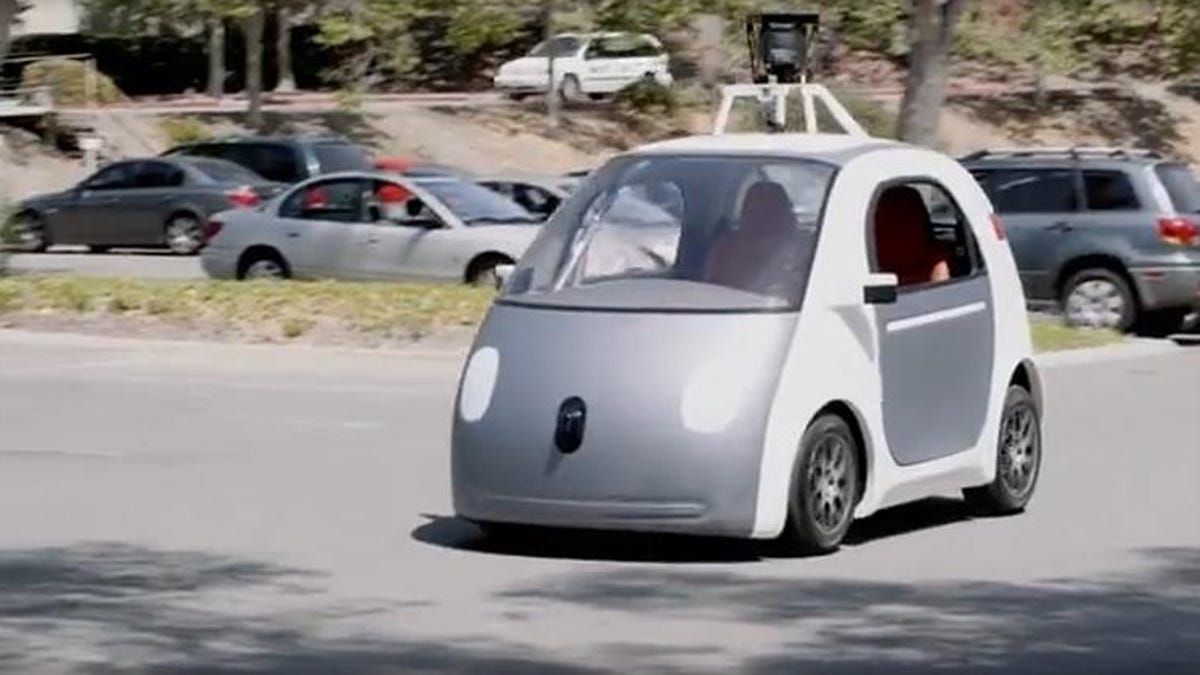Google's self-driving cars will need steering wheels, at least for now
Rules issued by the California DMV say the search giant's software-powered car prototypes still need physical controls during testing.

Google has been hard at work developing self-driving cars, but it looks like the company will need to wait before software is truly in the driver's seat.
The California Department of Motor Vehicles has issued rules that say a driver must be capable of "immediate physical control" of a vehicle. So, the search giant's prototype cars for now will include steering wheels and a brake-pedal system.
Google in May unveiled its own built-from-scratch car model -- a tiny two-seater with a front exterior that resembles a cartoon smiley face. The vehicle was notably missing the physical controls for the driver, in favor of buttons that controlled the software.
The company said it would comply with the state's regulations, which will go into effect in mid-September. "During our testing we are equipping the vehicles with manual controls such as a steering wheel, brake pedal, and accelerator pedal," said a Google spokesperson. "With these additions, our safety drivers can test the self-driving features while having the ability to take control of the vehicle if necessary."
Testing on private roads will begin next month, in prototypes that will include a steering wheel and pedals. The California DMV is expected to issue another regulation later this year that will let manufacturers apply for permits to operate driverless cars -- without steering wheels, brakes or accelerators -- on public roads.
Google's self-driving car initiative is just one of the company's more out-there projects, which Google likes to call "moon shots." Other projects coming from the company's experimental division, called Google X, include the head-mounted device Google Glass , and a project called Loon, which aims to bring Wi-Fi to unconnected regions via high-altitude balloons. The company has publicly been working on its self-driving cars since 2010.
When Google co-founder Sergey Brin unveiled the prototypes in May, he said the goal of the project is for self-driving cars to be "significantly" safer than human-driven cars in a few years. The cars operate only at speeds of 25 miles per hour. Brin said at the time that the vehicle hadn't crashed at all during testing.
According to the Journal, the California DMV also set other rules for driverless vehicles. Ron Medford, director of safety for Google's car project, asked the department about testing other types of vehicles, like motorcycles and trucks. The department declined, saying it wanted to first take "baby steps" with the technology.
Update and correction, 4:48 p.m. PT: Adds more detail. An earlier version of this article also misstated that Google will be testing its prototype cars on public roads. The cars will be tested on private roads.

